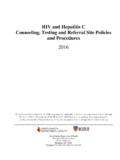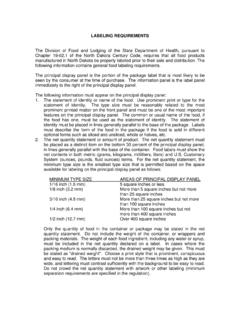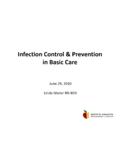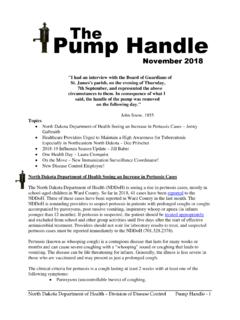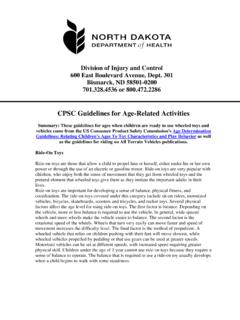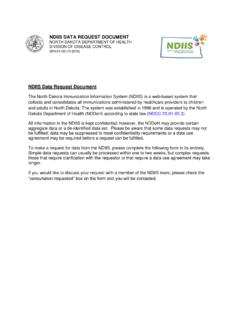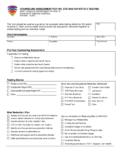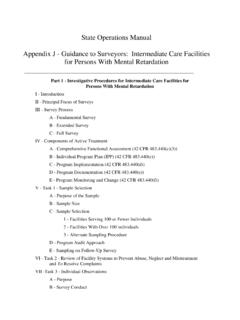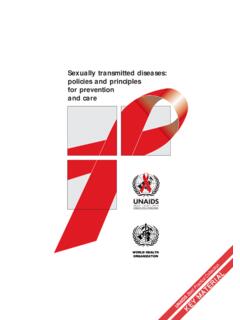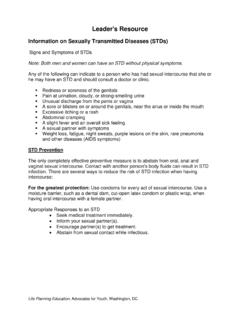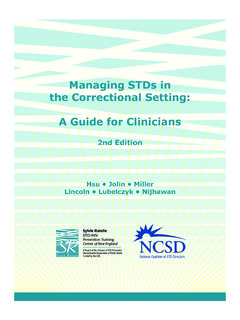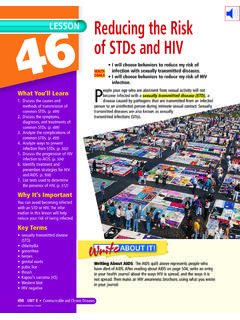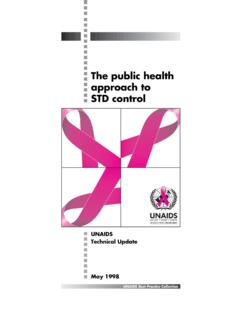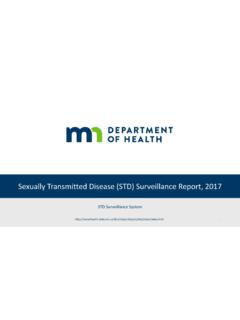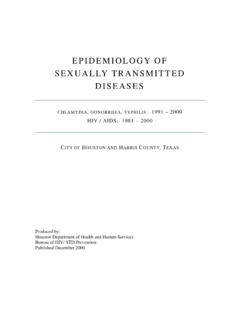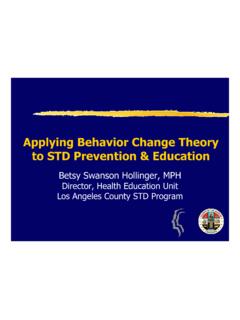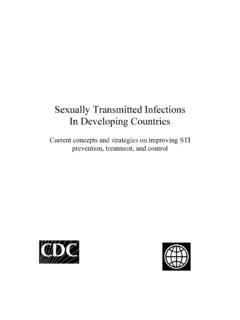Transcription of Epidemiologic profile of HIV, STDs, TB and viral …
1 2018 HIV, STD, TB & viral Hepatitis Epidemiologic profile August 2019 2018 North Dakota Hepatitis Epidemiological profile 1 This document was authored by the NDDoH Hepatitis Program: Lindsey VanderBusch, MPH HIV/STD/TB/ viral Hepatitis Program Manager Delora Pritschet TB Prevention and Control Coordinator Sarah Weninger, MPH HIV/STD/ viral Hepatitis Prevention Coordinator Gordana Cokrlic Ryan White Part B Program Coordinator Shari Renton, MPH HIV/STD/ viral Hepatitis Surveillance Coordinator 2018 North Dakota Hepatitis Epidemiological profile 2 Table of Contents Introduction .. 6 Data Sources .. 7 Maven .. 7 HIV/AIDS Data Sources.
2 7 STD Data Sources .. 8 Tuberculosis Surveillance Data .. 8 viral Hepatitis Surveillance Data .. 8 Vital Statistics Data .. 9 Demographic Data .. 9 Guidelines to Interpretation of the Data .. 10 North Dakota Demographics .. 11 Age and Gender Distribution .. 11 Race Distribution .. 12 Social Characteristics .. 12 HIV Prevalence .. 13 Age .. 14 Race .. 14 Perinatal Exposures .. 14 Geography .. 15 2018 HIV/AIDS Incidence .. 15 15 Age .. 16 Race .. 16 Country of Birth .. 17 Geography .. 18 Risk of Infection .. 19 HIV Care Ryan White Part B Program .. 20 21 Age .. 21 Race .. 22 2018 North Dakota Hepatitis Epidemiological profile 3 Geography.
3 22 Poverty Level .. 23 Housing Status .. 24 Insurance Status .. 24 Services .. 25 ADAP .. 26 HIV Care Continuum .. 29 Disparities by Race .. 31 Disparities by Risk .. 31 Disparities by Geography .. 32 Hepatitis B Virus (HBV) .. 33 Acute HBV .. 33 33 Race .. 34 Geography .. 35 Perinatal Follow-Up .. 35 Hepatitis C Virus (HCV) .. 37 Acute HCV .. 37 37 Age .. 37 Race .. 38 Geography .. 39 Hepatitis C Enhanced Surveillance .. 39 HIV/AIDS Counseling, Testing and Referral Data .. 41 42 Age .. 42 Race .. 43 Geography .. 43 Risk Factors .. 44 HIV Positives Identified at CTR Sites .. 45 HCV Counseling, Testing and Referral Data .. 46 2018 North Dakota Hepatitis Epidemiological profile 4 46 Age.
4 47 Race .. 47 Geography .. 48 Risk Factors .. 48 HCV Positives Identified at CTR Sites .. 49 Chlamydia .. 51 51 Age .. 52 Race .. 52 Risk Factors .. 53 Geography .. 53 Gonorrhea .. 54 54 Age .. 54 Race .. 55 Risk Factors .. 55 Geography .. 56 Syphilis .. 57 57 Age .. 58 Race .. 58 Risk Factors .. 58 Geography .. 59 Tuberculosis Disease .. 60 60 Age .. 61 Race .. 61 Geography .. 62 Tuberculosis Infection .. 63 Appendix A .. 64 2018 North Dakota Hepatitis Epidemiological profile 5 Appendix B .. 65 2018 North Dakota Hepatitis Epidemiological profile 6 Introduction The Epidemiologic profile of HIV, stds , TB and viral Hepatitis describes the epidemiology of HIV/AIDS; sexually transmitted diseases (chlamydia, gonorrhea and syphilis); tuberculosis (latent and active); hepatitis B (HBV); and hepatitis C (HCV) in North Dakota during 2018.
5 This profile covers the general epidemiology of diseases in terms of gender, age, race, geography and associated casual factors. This profile was created to assist in developing a Comprehensive Jurisdictional HIV and viral Hepatitis Prevention and Care Plan. Information in this report is used to characterize and predict the changing epidemic at the local level. North Dakota data is summarized annually to help North Dakota s Department of Health (NDDoH) answer questions about how to prevent these diseases in the population. Table 1. Common abbreviations/acronyms used throughout this profile ABBREVIATION FULL DESCRIPTIONADAP AIDS Drug Assistance ProgramAIDS Acquired Immunodeficiency Syndrome ART Antiretroviral TherapyCDC Centers for Disease Control & Prevention CPG ND Community Planning Group for HIV and viral Hepatitis Prevention, Care and Treatment CSTE Council of State and Territorial Epidemiologists CTR Counseling.
6 Testing and Referral EHARS Electronic HIV/AIDS Reporting System HBV Hepatitis B VirusHCV Hepatitis C VirusHIV Human Immunodeficiency VirusIDU Injection Drug UseHRSA Human Resources and Services Administration MSM Men Who Have Sex with MenNDDOH North Dakota Department of HealthPLWH Persons Living With HIV/AIDSPWID Persons Who Inject DrugsRW Ryan WhiteSTD Sexually Transmitted DiseaseTB Tuberculosis 2018 North Dakota Hepatitis Epidemiological profile 7 Data Sources Data was compiled from a number of sources to present the most complete picture of the epidemiology of diseases as possible. However, because few behavioral or supplemental surveillance projects are available in North Dakota, core surveillance data is utilized extensively.
7 Each data source has strengths and limitations. A brief description of each source follows. Maven The North Dakota Electronic Disease Surveillance System, known as Maven, is an electronic disease surveillance system that allows public health officials to receive, manage, process and analyze disease and other condition-related data. Maven offers tools for automatic disease reporting, case investigations, and case follow-up and management within the state of North Dakota. It is an integrative system allowing easy sharing and connecting among the NDDoH, local public health, and providers. HIV/AIDS Data Sources HIV/AIDS Case Surveillance A diagnosis of HIV/AIDS is a mandatory reportable condition to the NDDoH according to North Dakota Century Code Chapter 23-07-01 and North Dakota Administrative Code Chapter 33-06-01.
8 Reports of HIV/AIDS cases can be provided by physicians, hospitals, laboratories and other institutions. The data is stored in the electronic HIV/AIDS Reporting System (eHARS) and Maven databases. Statistics and trends presented in this report were derived from HIV/AIDS case data reported to the NDDoH cumulatively starting in 1984 through December 31, 2018. HIV/HCV Counseling and Testing Data The NDDoH funds 23 free, confidential HIV/HCV testing and counseling sites in North Dakota and holds contracts with the sites to provide rapid and confirmatory testing. Participants complete risk assessments as part of a testing visit or during outreach.
9 Risk factors of the patients who receive tests through this program are reported to the NDDoH via Maven. HIV Care Data/Ryan White Part B Program The North Dakota Ryan White Part B Program assists low-income North Dakota residents living with HIV or AIDS to access confidential health and supportive services. The program was implemented in 1991. In order to participate in the North Dakota Ryan White Part B Program, one must be a resident of North Dakota, have a gross income of less than 400 percent of the current Federal Poverty Level and have proof of HIV infection. 2018 North Dakota Hepatitis Epidemiological profile 8 Part B services include core and supportive medical services.
10 Core services include outpatient/ambulatory medical services, AIDS Drug Assistance Program (ADAP), oral health care, health insurance premium assistance, mental health services and medical case management. Supportive services include non-medical case management, housing services, medical transportation services and emergency financial assistance. The Ryan White Part B Program manages program information using Maven. This has allowed for integration and sharing of information between HIV Prevention and Surveillance programs. This system ensures that required client-level data elements are collected and reported to HRSA. The real time nature of the networked system allows the Ryan White Part B Program to monitor specific indicators ( , number of clients without medical insurance) in a more timely fashion, and it gives case managers access to view lab work and medication so that clients can be served more effectively.
